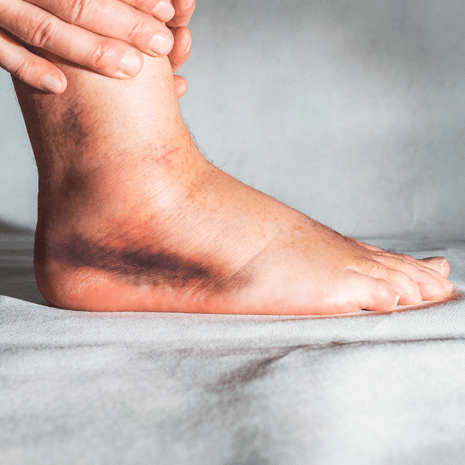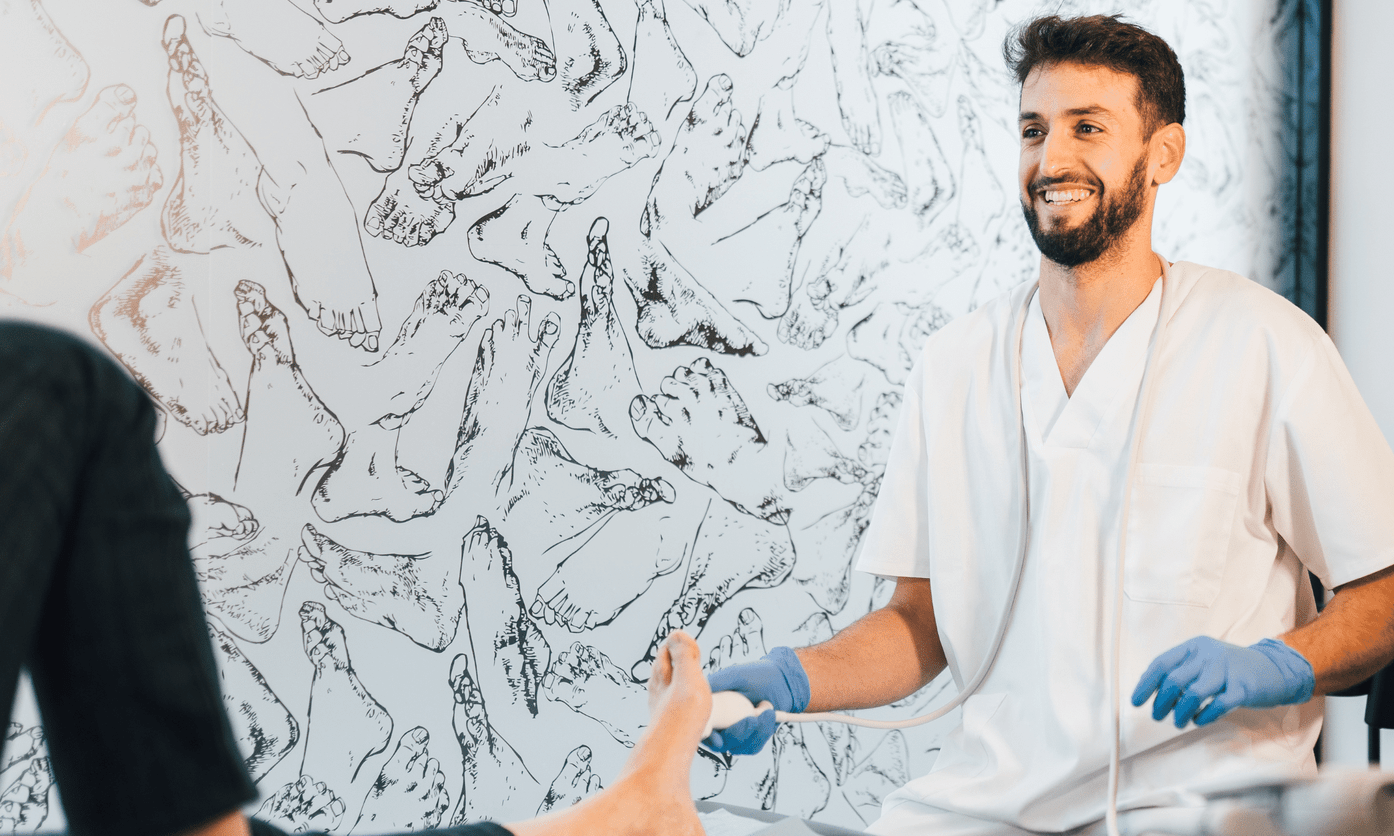Posterior Tibial Tendon Dysfunction at Foot Foundation
Posterior Tibial Tendon Dysfunction (PTTD) is a progressive condition that weakens the tendon running along the inside of the ankle, leading to arch collapse and increasing ankle pain. Over time, this can develop into adult-acquired flatfoot and even ankle arthritis if left untreated.
Early management is key. At Foot Foundation, we focus on accurate diagnosis and tailored treatment to support the arch, strengthen the tendon, and restore stability. With specialist care, many patients can prevent progression and maintain an active lifestyle.
What is Posterior Tibial Tendon Dysfunction (PTTD)?
The posterior tibial tendon runs along the inside of the ankle, connecting the calf muscles to the arch of the foot. Its role is to support the medial longitudinal arch and stabilise the ankle during walking.
Posterior Tibial Tendon Dysfunction (PTTD) occurs when this tendon becomes overstretched, inflamed, or degenerative, leading to progressive collapse of the arch and increasing ankle pain. If untreated, it can progress to adult-acquired flatfoot deformity and ankle arthritis.
At Foot Foundation, we specialise in the early diagnosis and management of PTTD, preventing progression and restoring function through advanced rehabilitation, orthotics, and supportive therapies.
Causes & Risk Factors
Overuse – repetitive walking, running, or high-impact activity
Biomechanical strain – flat feet (pes planus), excessive pronation
Age-related degeneration – reduced tendon vascularity and elasticity
Previous ankle injuries – increasing load on the posterior tibial tendon
Obesity – increased load on the tendon and arch
Systemic conditions – diabetes, inflammatory arthritis
Poor footwear – inadequate arch support, worn-out shoes
Gender – more common in women over 40
Treatment at Foot Foundation
Custom orthotics – support the arch and reduce tendon strain
Ankle-foot orthoses (AFOs) – for advanced cases requiring external bracing
Footwear modification – supportive shoes with strong medial support
Exercise therapy – strengthening of tibialis posterior, intrinsic foot, and calf muscles
Manual therapy – improve mobility and reduce stiffness
Shockwave therapy (ESWT) – stimulate tendon healing in degenerative cases
Strapping or bracing – temporary relief and stabilisation
Weight management support – reduce load on tendon and joints
Referral for surgery – in severe or advanced cases (tendon transfer, osteotomy, or fusion procedures)
Symptoms
Pain and swelling along the inside of the ankle and foot
Flattening of the arch over time (progressive flatfoot)
Pain worsening with activity, particularly walking or standing for long periods
Inability to perform a single-leg heel raise on the affected side
“Rolling in” of the ankle (excessive pronation)
In advanced cases, pain may spread to the outside of the ankle due to joint strain
Stages of PTTD
Stage I: Mild tendon inflammation, no deformity
Stage II: Arch flattening begins, tendon elongates, ankle instability
Stage III: Rigid flatfoot deformity, arthritis may develop
Stage IV: Ankle joint involvement, severe deformity and arthritis
Diagnosis
At Foot Foundation, diagnosis is made through:
Clinical examination of tendon tenderness, arch collapse, and ankle alignment
Functional testing (single-leg heel raise, gait analysis)
Biomechanical assessment of pronation and load distribution
Imaging:
Ultrasound – tendon thickening, degeneration, or tears
MRI – detailed tendon evaluation and arthritis assessment
X-rays – in later stages to confirm deformity and arthritis
Posterior Tibial Tendon Dysfunction – FAQs
It is a condition where the tendon that supports the arch of the foot becomes damaged or weakened, leading to progressive flatfoot and ankle pain.
Symptoms include pain along the inside of the ankle, swelling, flattening of the arch, and difficulty performing a single-leg heel raise. In advanced cases, the foot may roll inward and become rigid.
PTTD is usually caused by overuse, degeneration, or biomechanical overload. Risk factors include flat feet, obesity, age over 40, previous ankle injuries, and systemic conditions such as arthritis or diabetes.
Diagnosis is based on clinical examination and imaging. Ultrasound or MRI can confirm tendon degeneration or tearing, while X-rays may show advanced deformity or arthritis.
Early-stage PTTD can often be managed successfully without surgery through orthotics, footwear modification, and strengthening programs. Advanced cases may require bracing or surgical correction.
The best treatment depends on severity. At Foot Foundation, this often includes:
- Custom orthotics and footwear support
- Exercise rehabilitation
- Shockwave therapy for chronic tendon pain
- AFOs for advanced cases
Yes. Orthotics are one of the most effective treatments, providing arch support, reducing strain on the tendon, and slowing progression of flatfoot deformity.
Yes. If untreated, PTTD can progress to ankle and hindfoot arthritis, particularly in stages III and IV.
Surgery is only considered in advanced cases that fail conservative care. Procedures may include tendon transfer, osteotomy, or joint fusion depending on severity.
If you notice persistent ankle pain, arch flattening, or difficulty with balance and walking, you should seek assessment. Early intervention greatly improves outcomes.
Why Choose Foot Foundation?
Foot Foundation provides specialist care for posterior tibial tendon dysfunction, addressing both tendon pathology and biomechanical risk factors. We combine orthotics, exercise rehabilitation, shockwave therapy, and advanced bracing to restore stability and prevent progression.
With clinics in Rosedale, Takapuna, Remuera, Botany, Hamilton, and Tauranga, we deliver expert ankle care across New Zealand.




